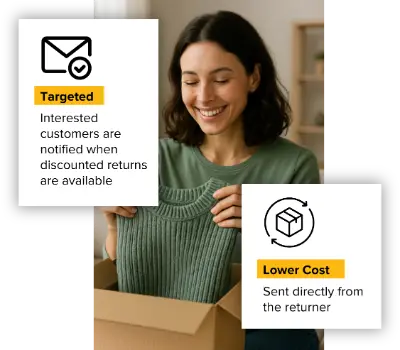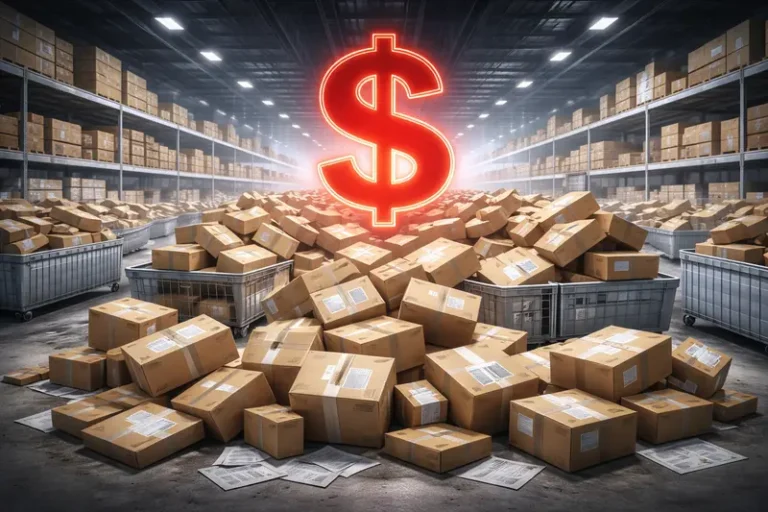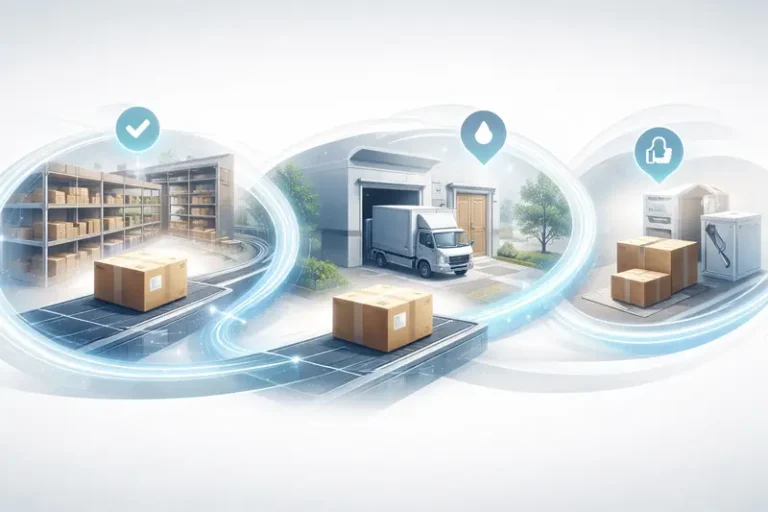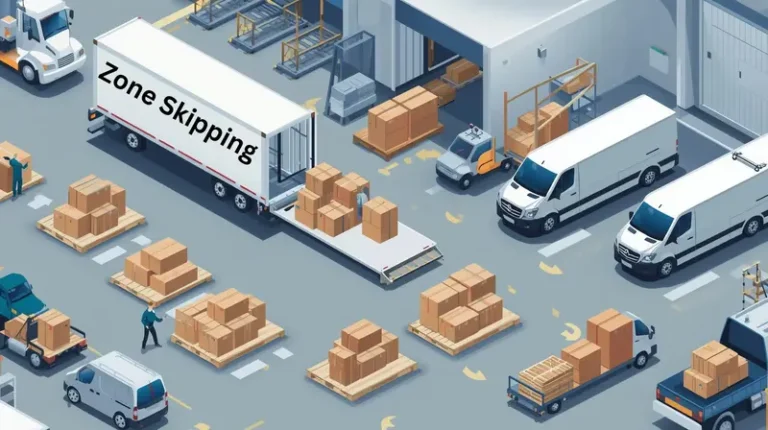Kickstarter Order Fulfillment: The Complete 2025 Guide

Last updated on September 05, 2025
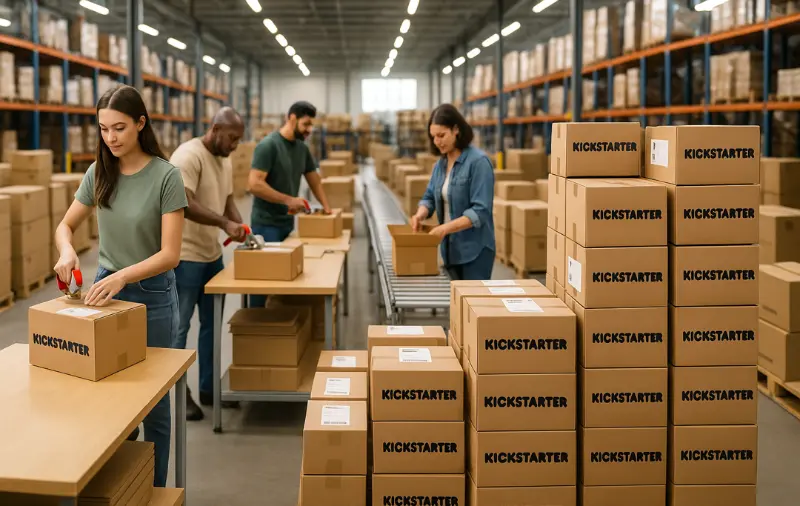
In this article
 13 minutes
13 minutes
Imagine you’ve just had a wildly successful Kickstarter campaign. Funding goal crushed, you did it! But now comes the hard part: Kickstarter order fulfillment; processing and shipping all those Kickstarter orders. Getting all those promised rewards into backers’ hands, on time and intact, is often more daunting than raising the money. It can truly make or break your project’s reputation by meeting backer expectations and ensuring timely deliveries.
Why Fulfillment Can Make or Break Your Kickstarter Campaign
Delivering on your promises is what turns a funded project into a success story. Backers might love your idea, but they’ll judge you by whether you ship their Kickstarter rewards as promised. And many creators struggle here. Roughly 1 in 10 Kickstarter campaigns never deliver the product at all, and among the biggest projects, about 84% ship later than promised. In other words, if you don’t nail your fulfillment process, you risk burning backers’ goodwill even after a great campaign. The entire process of fulfillment, from storage and packaging to shipping and delivery, can be complex and requires careful attention to detail.
Why do creators stumble with order fulfillment? It’s usually because fulfillment is a whole project of its own. Common pitfalls include:
- Bad Planning & Budgeting: Underestimating shipping costs and logistics. Many creators set aside too little money for postage, packaging, and international fees, or don’t anticipate the number of orders in each country. The costs involved, especially for international shipping, customs, and importation, can add up quickly. When reality exceeds expectations, delays and budget overruns hit hard.
- DIY Overload: Trying to fulfill hundreds or thousands of orders by yourself. Creators who insist on boxing and shipping everything solo often face exhaustion, slow deliveries, and mistakes. Past a certain volume, doing it all alone just doesn’t scale; using fulfillment services or fulfillment partners can help avoid burnout and improve efficiency.
- No International Strategy: Shipping to international backers without a plan for customs and duties. Without thorough research and preparation (or help from regional partners), you risk packages getting stuck in customs or paying sky-high rates for overseas delivery.
- Poor Communication: Going silent when fulfillment problems arise. If you don’t keep backers informed about delays or issues, small hiccups turn into big frustrations. Transparent, frequent updates are crucial to maintain trust, and working with the right partner can help maintain communication and avoid surprises.
The good news? With some foresight, you can avoid these pitfalls. It starts with planning your fulfillment early, conducting thorough research, and being ready with the right resources to avoid surprises by preparing early and choosing reliable partners.
Slash Your Fulfillment Costs by Up to 30%
Cut shipping expenses by 30% and boost profit with Cahoot's AI-optimized fulfillment services and modern tech —no overheads and no humans required!
I'm Interested in Saving Time and MoneyPhase 1: Pre-fulfillment Planning
Don’t wait until the last minute to figure out how you’ll ship rewards. Plan your fulfillment strategy as you plan your campaign.
Budget Smartly: Before launch, research shipping options and get cost estimates for various regions. Consider which shipping countries you will support and whether to limit fulfillment to your own country to simplify logistics and reduce costs. Weigh your prototype (with packaging) to calculate accurate postage. Include a healthy buffer in your funding goal for fulfillment expenses; it’s better to raise a little extra than to come up short. When budgeting, account for any setup fees that fulfillment services may charge. Setting realistic shipping fees for backers (or incorporating shipping into pledge levels and reward tiers properly) will prevent surprises later. Plan for handling pre-orders in addition to regular campaign rewards, as this impacts fulfillment planning. Integrating shopping carts with your fulfillment system can streamline order processing and inventory management.
Vet Your Partners Early: Line up reliable manufacturing and shipping partners well before your campaign ends. Whether you plan to fulfill in-house or use a Kickstarter fulfillment partner, start conversations early. Look for partners with experience in the Kickstarter fulfillment process and strong inventory management capabilities. If you’re considering a specialized crowdfunding fulfillment service or 3PL, reach out for quotes and ask about their experience with Kickstarter projects. Early vetting prevents scrambling for a solution after you’ve collected backer money.
Set Realistic Timelines: Be conservative with your promised delivery dates. It’s tempting to say rewards will ship immediately after the campaign, but unexpected delays in production, freight, or customs are common. Build in buffer time. Backers will be much happier if you deliver early than if you announce delays later. Map out each step of the Kickstarter fulfillment process (manufacturing, quality check, freight to warehouse, packaging, shipping) and give yourself some cushion at each stage when you communicate timelines. Make sure to provide up to date information to backers about fulfillment progress.
Phase 2: DIY Fulfillment vs. Fulfillment Partner
Next, decide how you’ll handle the actual shipping of rewards: do it yourself or outsource to a fulfillment service?
Doing It Yourself (DIY): Fulfilling orders on your own can work well for a small campaign. If you have a manageable number of backers (say a few hundred or less) and the time and resources to pack boxes, print shipping labels, and handle post office runs, DIY gives you full control. It can be cost-effective too, you’re not paying service fees to a third party. However, be realistic about the workload. Hundreds of packages can consume weeks of your time. Make sure you have space to store inventory, and perhaps enlist friends or family to help pack. DIY fulfillment is perfectly fine for a successful Kickstarter with modest order counts, but it becomes a strain as volume grows.
Using a Fulfillment Partner: If your campaign has thousands of backers or you’re shipping worldwide, a professional fulfillment partner; more accurately described as a service provider (often a 3PL, third-party logistics company); is worth considering. These service providers handle comprehensive Kickstarter fulfillment work, including storing your inventory in fulfillment centers, picking, packing, and shipping rewards to your backers. 3PLs are experts at fulfilling Kickstarter orders efficiently, managing the entire shipping lifecycle from inventory management to order tracking.
Kickstarter use does not involve a specific shipping company; creators are responsible for selecting their own fulfillment partners or shipping services. The benefits of using multiple warehouses and fulfillment centers are especially important for international campaigns, as they help optimize shipping speed and reduce customs costs. Choosing the right shipping methods is also crucial to ensure timely and cost-effective delivery to your backers.
The obvious downside is cost; you’ll pay for their service, but the upsides include speed, accuracy, and scalability. Good fulfillment companies have systems to handle large volumes efficiently, access to discounted shipping rates, and experience with customs and international shipping. They can often get rewards to your backers faster (and with fewer errors) than you could on your own. For example, if you suddenly have to ship 5,000 packages, a fulfillment partner can accomplish that in days, whereas it might take you weeks. The rule of thumb: if fulfilling orders starts to look like a full-time job, bring in the pros. Just do your homework and choose a partner with Kickstarter fulfillment experience and solid references.
Looking for a New 3PL? Start with this Free RFP Template
Cut weeks off your selection process. Avoid pitfalls. Get the only 3PL RFP checklist built for ecommerce brands, absolutely free.
Get My Free 3PL RFPPhase 3: International Shipping & Backer Management
Shipping rewards globally is a common source of stress for Kickstarter creators. International backers are awesome, but getting a package to a backer in Brazil or Germany isn’t as simple as a domestic shipment. Global shipping introduces additional challenges, such as navigating customs, managing logistics, and ensuring timely delivery across borders. Here’s how to tackle it:
Plan for Customs and Duties: Research the countries where you have backers and understand their import rules. When handling international orders, it’s important to select your shipping countries strategically to streamline costs and avoid customs issues. You may need to fill out customs forms declaring the value and contents of each reward shipment. Decide whether you’ll send packages Delivery Duty Unpaid (DDU), meaning the backer pays any import taxes on arrival, or Delivery Duty Paid (DDP), meaning you collect money upfront and pay the duties so the package arrives with no surprise fees. Many creators choose DDU to keep things simple, but if you do, be sure to warn backers that they’re responsible for any VAT or customs charges. Transparency here will save you many angry emails later.
Consider Local Fulfillment Hubs: If you have a large cluster of backers in a particular region (say Europe or Asia), it might actually be more efficient to bulk ship all those rewards to a local partner and fulfill from within that region. For example, you could send one big shipment to an EU warehouse and have packages forwarded to individual backers from there. This way, those backers get their rewards faster and with lower local postage, and they’re less likely to be charged additional taxes (since intra-EU shipments might avoid certain duties). This approach requires coordination, but it can dramatically improve the experience for international backers and potentially save money on international shipping rates. If you’re considering expanding your reach in the U.S., national fulfillment services can offer similar efficiencies by leveraging a nationwide network of warehouses.
Packaging and Regulations: Different countries have different rules. Some items might face restrictions (for instance, battery-powered devices, food items, liquids, etc.). Work with your shipping partner or do research to ensure your rewards aren’t violating any prohibitions in the destination countries. Also, invest in sturdy custom packaging for international shipments. Branded and personalized packaging not only enhances your brand but also protects fragile items during transit. Managing your supply chain efficiently is crucial for international fulfillment, ensuring your products are manufactured, stored, and shipped in compliance with all regulations. The last thing you want is your product arriving broken after an overseas journey.
Keep Backers Informed: Communication is even more crucial with international backers, because their deliveries take longer and involve more uncertainty. To meet the expectations of most backers, provide tracking numbers for international packages whenever possible. Services like USPS First Class International don’t always offer full tracking, so consider using postal options that do, or regional couriers, even if they cost a bit more. Let backers know when their reward has shipped and give an expected range for delivery (often 2 – 4 weeks for international shipments). Encouraging patience while providing transparency is key.
Phase 4: Keeping Backers Happy Through Fulfillment
Throughout the fulfillment process, remember that your backers are your early supporters and fans. Customer satisfaction should be a key goal at every stage. How you treat them now is crucial for your brand’s long-term reputation. Some tips to keep backers happy (even if you hit a few bumps on the road):
Regular Updates: Don’t go dark after the campaign. Continue to post Kickstarter updates or emails detailing progress, “We received the first batch from the factory,” “All rewards are now packed and awaiting pickup,” etc. Even if nothing has changed, a brief “we’re still on track” update every few weeks reassures backers that you haven’t forgotten them. Lack of information is what breeds frustration.
Honesty About Delays: If you encounter a delay (big or small), inform your backers as soon as you can. Whether it’s a manufacturing issue or shipping vessel stuck at port, share the facts. Backers are usually very understanding about delays when they hear directly and promptly from the creator. What causes anger is silence or vague excuses. It can be tough to admit to problems, but owning it and explaining how you’re addressing it will earn you far more respect.
Customer Service Mindset: Treat every backer inquiry as you would a customer support request. During fulfillment, you’ll get messages: an address needs changing, a package didn’t arrive, a reward came with a defect, etc. Aim to respond quickly and helpfully. For missing or damaged rewards, send replacements if you can (build a small surplus into your production for this). The tone you set in these interactions matters. Satisfied backers are essential for your brand’s reputation and future success. A backer who has an issue resolved promptly can turn into your biggest cheerleader (“they really care!”) whereas an ignored email can turn someone into an unhappy commenter on your project page.
Provide Tracking and Follow-Through: Whenever possible, send out tracking information to backers for their shipments. Many pledge management platforms allow automated emails with tracking numbers. This not only reduces “where is my reward?” questions, but it gives backers peace of mind. Ensuring timely delivery should be a priority; if a tracking shows a package stuck or lost, be proactive, reach out to the carrier or consider re-sending the item. It’s extra effort, but remember, these people believed in you enough to fund you; delivering their reward safely is the least you can do.
Good communication and attentive service throughout fulfillment are the foundation for successful Kickstarter fulfillment. By prioritizing your backers’ experience, you build trust and set your project up for long-term success.
Scale Faster with the World’s First Peer-to-Peer Fulfillment Network
Tap into a nationwide network of high-performance partner warehouses — expand capacity, cut shipping costs, and reach customers 1–2 days faster.
Explore Fulfillment NetworkConclusion / Next Steps
Successfully fulfilling a Kickstarter campaign in 2025 is all about preparation, communication, and choosing the right partners. The same principles apply to all crowdfunding campaigns, whether on Kickstarter, Indiegogo, or other platforms. By baking in a fulfillment plan from the beginning, budgeting properly, and deciding whether to go DIY or use a fulfillment company, you set a strong foundation. From there, focus on international shipping logistics for global backers and maintain great communication throughout.
At the end of the day, smooth Kickstarter fulfillment is a win-win: your backers get what they were promised (and hopefully become repeat customers or brand ambassadors), and you get to cap off your successful campaign with delivered rewards and valuable experience for your next launch. Yes, it’s a daunting task, but if a creator approaches fulfillment with the same passion and thoroughness that they did the campaign itself, it can actually become another opportunity to impress and delight backers.
So plan ahead, take care of the details, and don’t be afraid to ask for help (whether from a 3PL or the Kickstarter community’s advice). With the right approach, you’ll turn your crowdfunding campaign into a fulfillment success story, and that’s the best possible start for whatever you do next.
Frequently Asked Questions
What is Kickstarter order fulfillment?
It’s the process of storing, packing, labeling, and shipping Kickstarter rewards so backers receive what was promised.
How do I handle international shipping?
Use customs forms, clear communication about duties, and consider local fulfillment hubs to reduce costs and delays.
Should I fulfill orders myself or hire a company?
DIY works for small campaigns. Large or global campaigns usually need a fulfillment partner for speed and accuracy.
How can I keep shipping costs low?
Compare carriers early, optimize packaging, use flat-rate or bulk shipping options, partner with services that offer discounts, and consider the best way to ship heavy items to cut costs and maximize profit.
What if my rewards are delayed?
Tell backers quickly, explain why, give a new timeline, and keep them updated until rewards ship.

Turn Returns Into New Revenue
